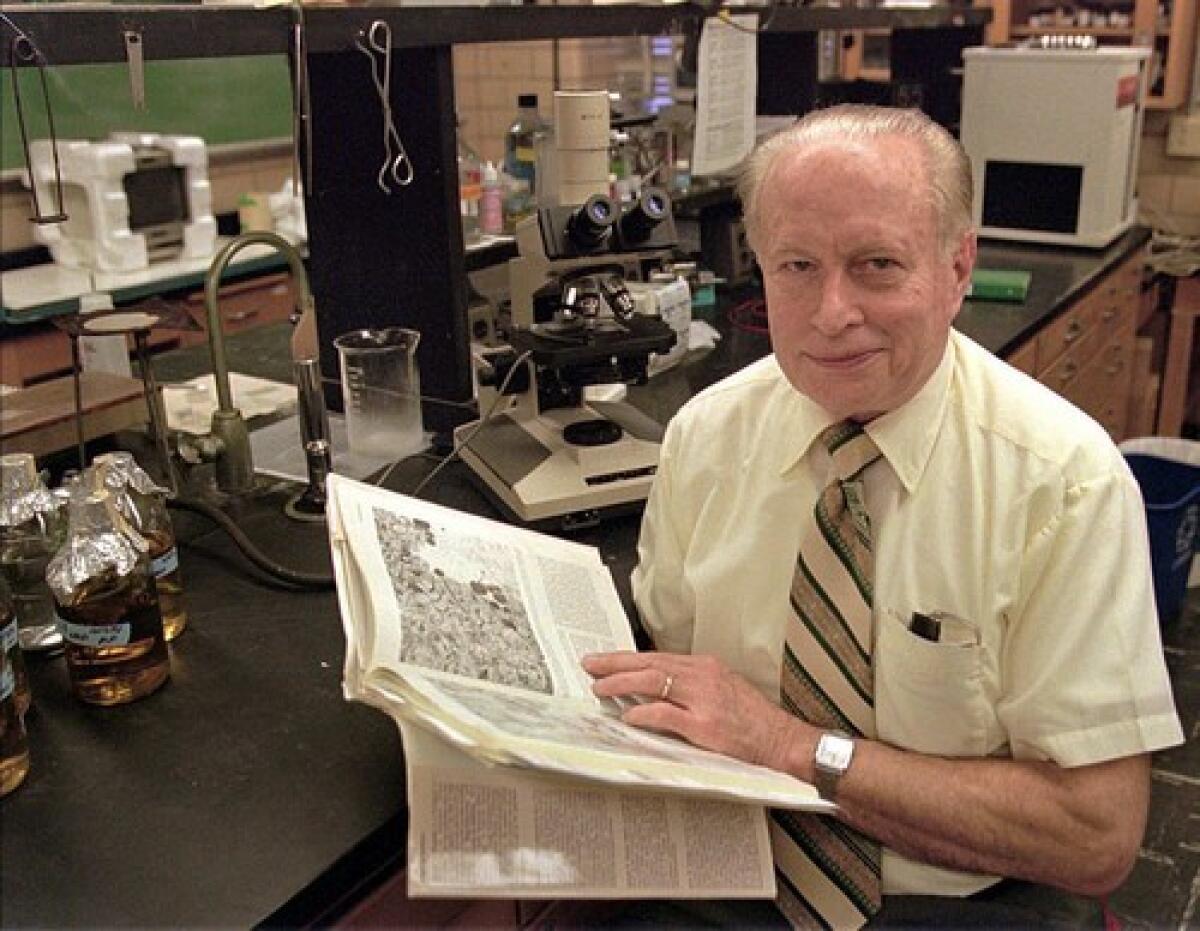Robert H. Foote dies at 86; Cornell researcher laid groundwork for cloning of animals

- Share via
Robert H. Foote, the Cornell University researcher who pioneered the study of DNA synthesis in the testes, in vitro fertilization and other aspects of reproduction and who was the last surviving officer of World War II’s famed “Go for Broke” 442nd Regimental Combat Team composed of Japanese Americans, died of lung failure in Ithaca, N.Y., on Oct. 27. He was 86.
Among other discoveries, Foote was the first to show that the rabbit ovary -- and subsequently that of all mammals, including humans -- contains its full complement of eggs at birth. The eggs are depleted throughout the female’s life by ovulation and by degeneration.
Working first in rabbits and then in other species, Foote was among the earliest researchers to study testicular function and to harvest sperm for the in vitro breeding of agricultural animals.
He discovered that treating bull semen with a mixture of the antibiotics penicillin, streptomycin and polymyxin could wipe out Vibrio fetus, a disease that causes abortions and that had cost the livestock industry hundreds of millions of dollars.
He was also among the first to use the radioisotopes carbon-14 and tritium to label DNA during spermatogenesis, which gave important insights into reproduction and led to better methods for harvesting sperm. That work served as the foundation for cloning of animals.
Robert Hutchinson Foote was born Aug. 22, 1922, on a dairy farm in Gilead, Conn. He majored in animal husbandry, earning his bachelor’s degree from the University of Connecticut, Storrs in 1943.
Commissioned a lieutenant in the Army during World War II, he was assigned to the 442nd because Japanese Americans, or Nisei, were then not permitted to become officers. The 442nd had a high casualty rate and was the most decorated unit in U.S. history, with 18,000 awards, including 9,500 Purple Hearts, 52 Distinguished Service Crosses, seven Distinguished Unit Citations and one Medal of Honor.
The group was commemorated in the 1951 film “Go for Broke!” starring Van Johnson.
Foote himself received a Bronze Star.
In October 1944, the young lieutenant was leading his unit, K Company, through the Vosges Mountains near Bruyères, France, to help push back a weakening but still entrenched German army. In the first resistance they met, a German mortar shell landed near railroad tracks and sent Foote tumbling down the embankment.
Shrapnel pierced his back and legs, leaving him badly injured. “If it had been any closer, it would have been in my back pocket,” he later told an interviewer for a Cornell publication.
His unit carried him back to a makeshift tent and gave him morphine and penicillin for three days while waiting for him to be airlifted out. “I was a fortunate one,” he said. “Several successive firefights decimated our unit.”
His unit was “among the best, if not the best, in the Allied forces,” he later told Asian Week. “Even though I walk with pain every step of my life, I have no regrets.”
Aftereffects of the injury altered his plans to become a farmer, and he used the GI Bill to study animal physiology at Cornell, where he received his master’s degree in 1947 and his doctorate in 1950. After graduation, he joined the faculty at Cornell and remained there the rest of his career, publishing more than 500 papers.
After researchers at the Roslin Institute in Edinburgh, Scotland, announced the successful cloning of the sheep Dolly in 1996, Foote became an outspoken opponent of efforts to clone humans.
“We are not ready technically or ethically to go ahead with these studies in humans,” he said.
Foote was preceded in death by his first wife, Ruth Parcells. He is survived by his second wife, Barbara Johnson Foote, and two sons, Robert W. of Connecticut and Dale of Philadelphia.
Maugh is a Times staff writer.



